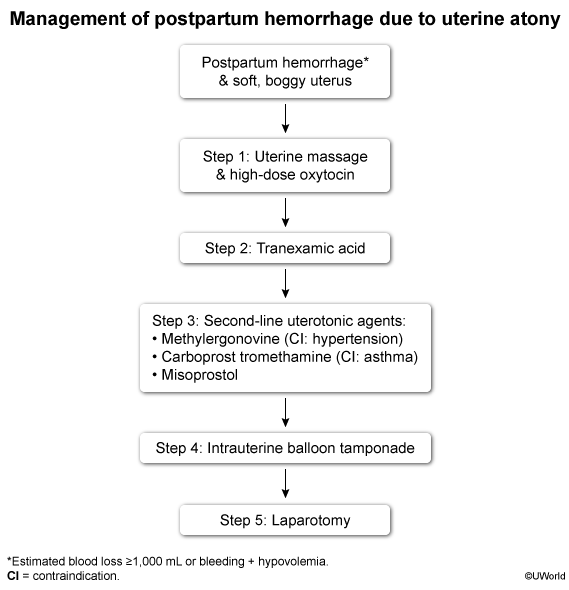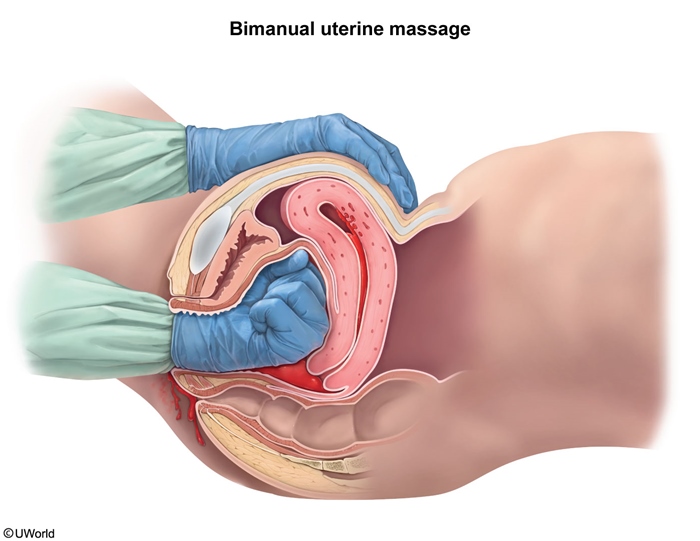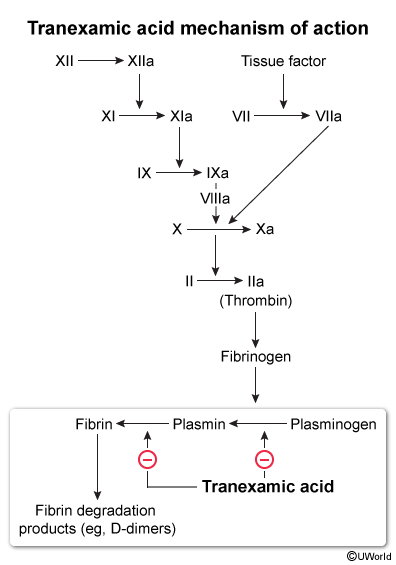Postpartum Hemorrhage
Article Sections
Introduction
Postpartum hemorrhage (PPH) is defined as either ≥1,000 mL of cumulative blood loss following vaginal or cesarean delivery OR bleeding associated with signs or symptoms of hypovolemia. PPH is an obstetric emergency and a leading cause of maternal morbidity and mortality due to hemorrhagic shock and coagulopathy.
Pathophysiology and risk factors
Normal physiologic control of postpartum bleeding involves mechanical hemostasis (uterine contraction causes compression of placental bed vessels to decrease blood flow) and the release of local and systemic coagulation factors to cause thrombosis of bleeding placental bed vessels.
The most common cause of primary PPH (occurring within 24 hr of delivery) is uterine atony, in which the uterus loses tone and cannot contract effectively for mechanical hemostasis. This causes the uterus to retain a large volume of clotted blood within the intrauterine cavity, which further impairs uterine contraction. This can lead to massive hemorrhage because uterine blood flow in late pregnancy accounts for 15% of cardiac output.
Continue Learning with UWorld
Get the full Postpartum Hemorrhage article plus rich visuals, real-world cases, and in-depth insights from medical experts, all available through the UWorld Medical Library.
Figures



